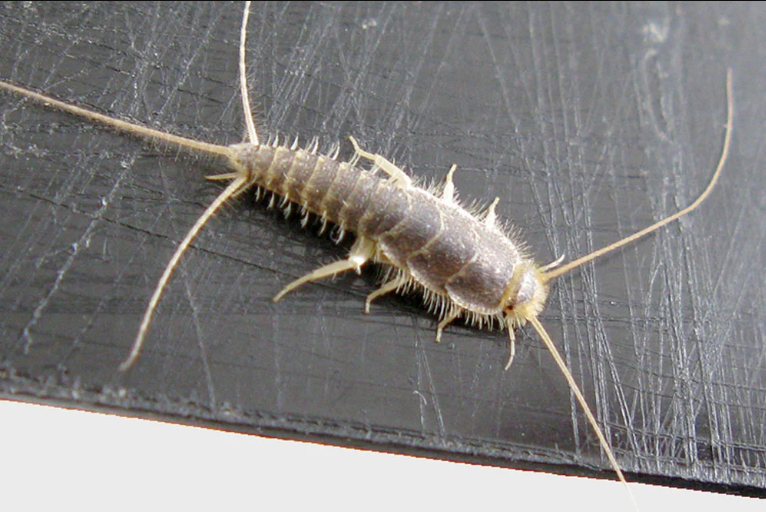
Silverfish Pest Control and Removal Services
Sneaky pests of the insect world
Fun Fact: Did you know that silverfish can live for several years without food? This impressive survival ability makes them particularly challenging to eradicate.
Silverfish are small, wingless insects, easily recognizable due to their distinctive silvery-gray color. They have elongated and flattened bodies along with a pair of long antennae. Typically measuring 0.5 to 1 inch in length. They are covered in fine scales that give them a shiny appearance, quite fitting for their name. These pests are most active in warm, humid environments. Thriving at temperatures between 70°F and 80°F. Because of this preference, silverfish are particularly common in areas of a home that have high moisture levels. This includes bathrooms, basements, kitchens, and laundry rooms. Their nocturnal habits mean that they often go unnoticed until a significant infestation occurs, leading to potential damage to household items. Understanding the biology and behavior of silverfish is essential for effective control and removal.
Silverfish feed primarily on carbohydrates, found in starchy materials like paper, books, and clothing made from natural fibers. This feeding behavior leads to noticeable damage over time, making early detection critical. As they are adept at finding their way into homes, they can easily travel through small cracks and crevices. They often hitch a ride on items like groceries or cardboard boxes. The combination of their elusive nature and feeding habits make it imperative for homeowners to be vigilant about signs of infestation. Awareness of silverfish behavior can empower individuals to take proactive measures in protecting their homes.
Common types of Silverfish in Canada
The most prevalent type of silverfish species in Canada are
Common silverfish also known as Lepisma Sacsharinum typically found in cooler, damp environments.
Firebrat also known as Thermobia Domestica prefers warmer locations.
Signs of infestation
Prompt action is needed to recognize the signs of a silverfish infestation. These are the kinds of insect that are most active at night. Homeowners may find themselves seeing these little intruders skittering around across floors, walls or ceilings. Another giveaway: yellow stains or small holes in the paper products, books, and fabrics that silverfish are well known for eating. Next to the visible insects, homeowners might notice shed skins, which resemble little exoskeletons, or droppings resembling tiny black pepper grains. Homeowners should not ignore these signs as they show a rapidly increasing silverfish population that will cause extensive damage over time.
How ECO Pest Control Combats Silverfish Infestation
ECO Pest Control is a leading company that offers viable and environmentally safe ways to banish silverfish from your property. We start by having a full inspection of your property. It’s done to determine the level of infestation and identify possible entry points. After this we begin with the control and removal procedure. Immediate measures to eliminate present silverfish and preventative steps to reduce likelihood for future infestations are taken. Our technique is aimed at killing silverfish with minimal risk to humans and pets. For this, we use sustainable products and methods as part of our process.
Also, to ensure no cracks or crevices around windows and doors, we seal them up. It is an entryway for these pests. We also provide suggestions on the best way to lower humidity levels in your home, enhancing ventilation and mending breaks. This is essential for avoiding these insects from entering your property again. If you would like to get rid of these tiny intruders, contact us now and sleep at ease.
Frequently asked questions
-
Silverfish does not directly cause any health hazards. However their presence is a nuisance since they damage items in your house.
-
No, ECO Pest Control employs eco friendly treatment methods that are safe for you and your family.
-
In order to prevent future infestations make sure no gaps around windows or cracks in the ceilings are left open. These may become potential entry ways for pests.


